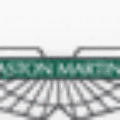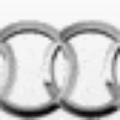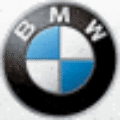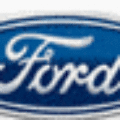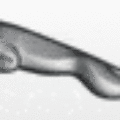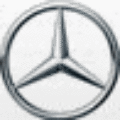Latest Euro NCAP video news about tests & car crash results
Euro NCAP organizes crash-tests and provides motoring consumers with a realistic and independent assessment of the safety performance of some of the most popular cars sold in Europe. Established in 1997, Euro NCAP is composed of seven European Governments as well as motoring and consumer organisations in every European country.
The European New Car Assessment Program (EuroNCAP) ratings provide car buyers with a good indication of which cars give the best protection for drivers, pedestrians and children. The information is impartial and easy to understand. The tests are sponsored by several of the larger transport departments of governments across Europe and companies who have an interest in vehicle safety, car manufacturers – who frequently use the results of the tests in advertising literature – also support the project
It would be impossible to test a car for every circumstance in which a crash may occur – so instead the tests simulate a wide range of common accidents as well as accidents which result in high fatality rates. A good performance in the EuroNCAP tests is an accurate indication of which cars offer best protection in a collision.
Euro NCAP has rapidly become a catalyst for encouraging significant safety improvements to new car design. See more Euro NCAP.
The European New Car Assessment Programme (Euro NCAP) is a European car safety performance assessment programme based in Brussels (Belgium) and founded in 1997 by the Transport Research Laboratory for the UK Department for Transport and backed by several European governments, as well as by the European Union.
Euro NCAP is a voluntary vehicle safety rating system which originated in the UK but is now backed by the European Commission, seven European governments, as well as motoring and consumer organisations in every EU country.
Euro NCAP is modelled after the New Car Assessment Program (NCAP), introduced 1979 by the U.S. National Highway Traffic Safety Administration. Other areas with similar (but not identical) programmes include Australia and New Zealand with ANCAP, Latin America with Latin NCAP and China with C-NCAP.
Euro NCAP publishes safety reports on new cars, and awards ‘star ratings’ based on the performance of the vehicles in a variety of crash tests, including front, side and pole impacts, and impacts with pedestrians. The top overall rating is five stars.
How the points system works
In order to rate cars, a points system has been developed and points can be achieved in several ways, all of which relate to preventing injury to an occupant in a collision.
Points are awarded for good designs that prevent contact between the crash test dummy and any part of the vehicle – which could be from the movement of the dummy into the car or by parts of the vehicle intruding into where the dummy sits. Airbags will improve the performance of a car by helping to cushion any hard areas of a car that a driver or passenger would come in to contact.
Points are also awarded for designs that preventing large amounts of movement by an occupant during the collision. The more that a crash test dummy moves during the impact, it means more of energy has been transferred into it and not dissipated by the vehicle’s structural design – and therefore the greater the risk of personal injury.
Further points are awarded for design features that have been developed for the safety of the car’s occupants. For example, if a manufacturer designs a system for preventing the doors and boot opening in a crash then there is less chance of an occupant being ejected from the vehicle – which can lead to a very serious injury – and so points are awarded.
Star Category
In order to simplify the points system, a star rating is given based on how many points a vehicle achieves during the tests. This is to give an easy-to-display and easy-to-understand comparative rating between cars of the same class; they cannot be compared between vehicles of different classes.
A comparison between vehicles with high and low star ratings was conducted in 2000, which concluded that occupants of vehicles with a high star rating were 30% less likely to suffer a serious or fatal injury in a crash.In some vehicle ratings, the final star has a cross through it which indicates that although a vehicle has achieved the necessary amount of points to achieve that rating, the occupant was put at risk due to a life threatening injury in one of the tests.
Frontal impact test
The frontal impact test simulates a collision with another structure that overlaps 40% of the cars bonnet on the drivers’ side. The structure is made out of a deformable mesh with a stiffness representative of a car bonnet, and impacts the vehicle at 40mph. The purpose of this test is to simulate a partially offset collision between the tested vehicle and an oncoming vehicle and this type of collision accounts for a large percentage of all car crashes on the road. It is therefore important that a car’s ability to withstand this type of impact is tested.
The frontal tests are performed at 64 km/h (40 mph) into an offset deformable barrier. This is designed to represent an impact with a vehicle of similar mass and structure as the car itself. The side impact tests are performed at 50 km/h (31 mph), but the side impact pole test is performed at 29 km/h (18 mph). The pedestrian safety tests are performed at 40 km/h (25 mph).
Euro NCAP adopted the rear-impact (whiplash) test as part of its new crash-test regime from January 1, 2009. This new rating system also focused more of the overall score on pedestrian protection; Euro NCAP were concerned that car manufacturers were too fixed on occupant safety rather than the safety of those outside the vehicle. Results of the first cars to be tested under the new scheme were released in February 2009.
Over the years, European automakers’ cars have become much safer, partly as a result of the Euro NCAP standards. Test results are commonly presented by motor press, and in turn greatly influence consumer demand for a vehicle. (source Wikipedia)
See more automotive news now!

